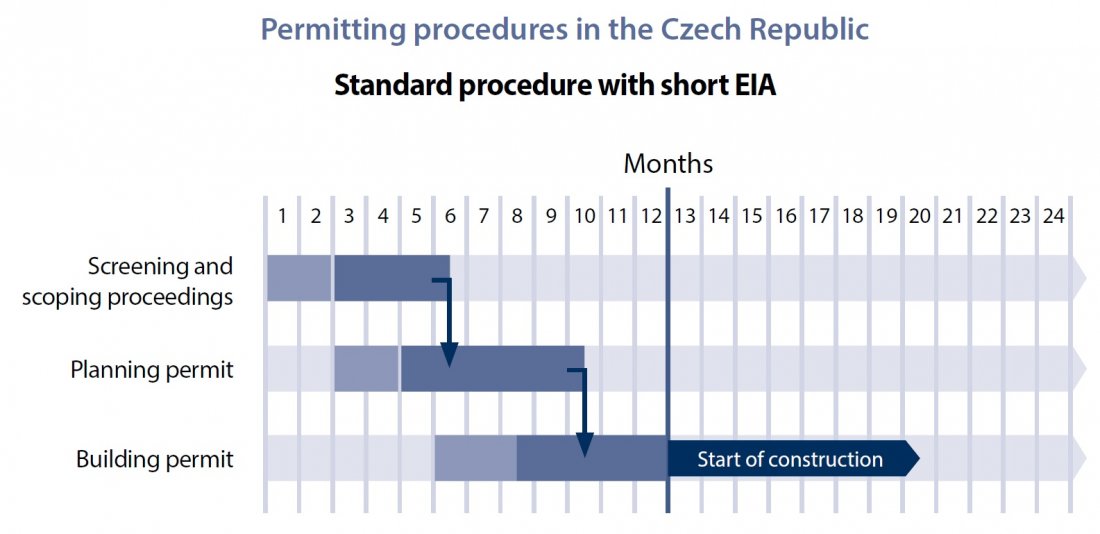
Permitting processes in Czech Republic
If a company is planning a construction project in the Czech Republic, it should be aware of the complete approval process before the start of construction and the subsequent inspection process for construction use and operating agreements, which are strictly governed by the Building Act and other related regulations.
It is highly recommended that the services of an experienced consultant and construction company be used to assess the risks of the proposed project. Risk assessment is the process of collecting available information on a hazard or a set of hazards in order to estimate actual or potential hazards to persons or places close to the site. The risk assessment should be a standard step during the pre-acquisition process, as it can make a significant contribution to the decision-making process as a whole and reduce the cost of remedial measures.
The first thing to find out is the current zoning plan of the area in which the project is to be placed. In addition to verifying that the proposed building complies with the zoning plan, it is necessary to further assess the project in accordance with the Nature and Landscape Protection Act. Most new investment projects in the industrial sector are large-scale and, in most cases, require an assessment under the Environmental Impact Assessment Act. An environmental impact assessment (EIA) is thus, in addition to the assessment of the zoning plan of the site of interest, the initial phase of each construction project. The EIA assesses the effects of planned buildings or structures and installations on public health and the environment (effects on animals and plants, ecosystems, soil, rock environment, water, air, climate and landscape, natural resources, material property and cultural sites and their interactions and context). The whole assessment is public. The competent authorities and the public must be informed of all upcoming projects and may express their opinions.
At the same time as the start of the environmental impact assessment, work on planning permit documentation can start. This documentation deals with the location of the building with respect to the surrounding land plots and the buildings on them and the connection of the building to the technical networks. In this documentation, the opinions of all concerned authorities and utility providers must be stated in accordance with the legislation in force.
After obtaining a valid decision on the location of the building, a building permit can be applied for. Once again, the documentation for the building permit is submitted to the relevant government authorities and to the owners of the public technical infrastructure for review. At the same time, the project is assessed from the point of view of integrated pollution prevention and control.
Following the completion of construction, an inspection of the structure is carried out by all participating authorities. During such inspections, the investor must demonstrate compliance with the conditions specified in the building permit and obtained opinions. If all the of conditions are fulfilled, a permit for test operation shall be issued. Alternatively, if test operation is not required, it is possible to apply directly for approval.
A new Building Act has recently been approved and will come fully into force including two amends in July 2024. Some particular changes has been applied. The new act is intended to significantly reduce the time required for obtaining a building permit and to simplify and digitalise the permitting process.

| Martin Dittrich Business Development Director Czech Republic Bilfinger Tebodin |

